This is a story on typical Swedish Christmas plants, dedicated to foreign students and postdocs in the Department of Biology.
Christmas tree
The foremost of all Christmas symbols must be the Christmas tree (Picea abies) which has adorned our homes for more than half a millennium, customs that came from Central Europe and which through centuries of tradition have grown firmly in our consciousness. Most people can hardly imagine a Christmas without a Christmas tree both indoors and outdoors.
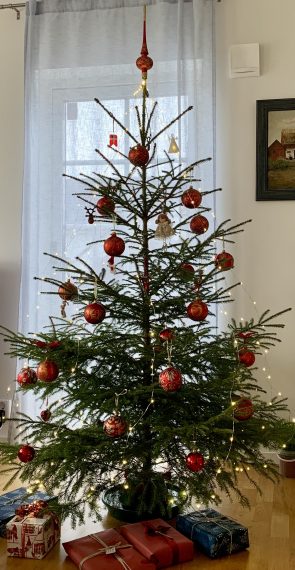
The spruce is the single of the Christmas plants presented here with a wide-spread natural occurrence in Sweden. However, most of our Christmas trees are nowadays sourced from plantations of the most common European fir, Red spruce, or Norwegian spruce. The genus Picea includes approximately 35 species, many of which mainly occur in western North America and have become Christmas trees there, for example, Sitka spruce (Picea sitchensis), Black spruce (Picea mariana), and Blue spruce (Picea pungens).
In recent years, growers have also started to market Christmas trees from the related genus Abies with around 42 species, including the species A. nordmanniana, sometimes called King fir, which produces trees with a more regular shape with coarser and slightly flatter needles.
Fortunately, or unfortunately, seen from both sides of long traditions versus environmental problems, a new market of plastic trees has entered into our homes and apparently seem to have adapted firmly in our way of modern thinking. You can even buy trees already fully decorated including lights.
Poinsettia
Poinsettia (Euphorbia pulcherrima) is a species in the Euphorbia family, Euphorbiaceae, which occurs naturally in Mexico, but is now spread over large areas with a Mediterranean climate. The Poinsettia has become a popular potted plant in many European countries, and especially at Christmas time.
In the wild, the Poinsettia is a bush that can grow several meters high, but through breeding, low-growing varieties have been formed that are suitable for our indoor environments. The Poinsettia is extremely sensitive to frost, and it is quite enough to kill a plant during the short walk from the flower shop to the car in winter cold.
The scientific species name pulcherrima means ”very beautiful” or ”most beautiful”. The characteristic red leaves are not petals but brightly coloured bracts, while the flowers are small, yellow, inconspicuous and sit in a wreath inside the bracts.
Not all Poinsettias are red, and breeding work has produced white, pink, and apricot coloured varieties. In some areas, the white ones are now called advent stars then used as decoration during the advent season to be replaced by the usual red ones in close to Christmas. Be careful with too much water and low temperatures, never keeping them outdoors in terraces or balconies.
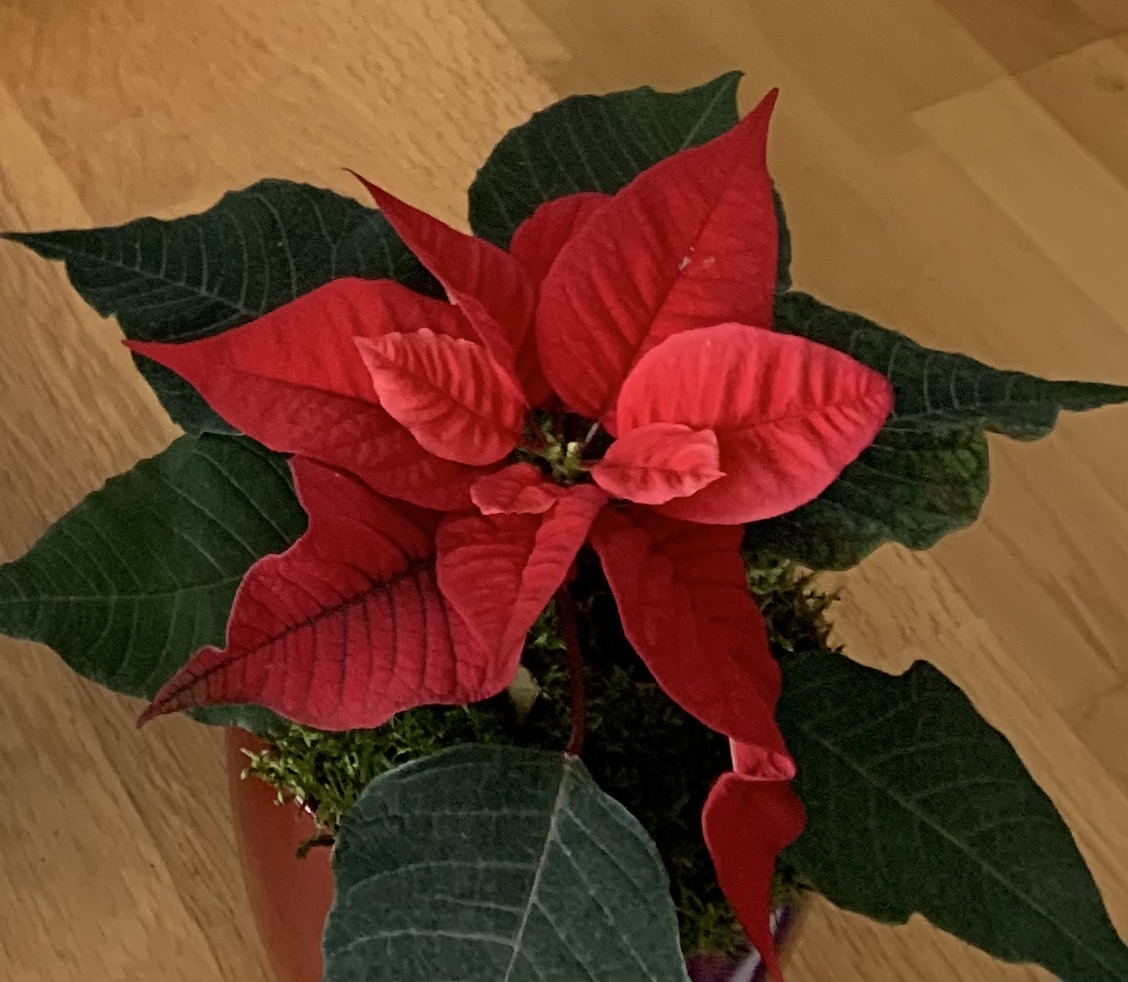
Christmas rose
Christmas rose (Helleborus niger), differently from Poinsettia, is a very frost-resistant genus of perennial, flowering plants in the Ranunculus family, Ranunculaceae, which occurs in alpine areas where you can even see the Christmas rose developing its flowers right through a thick blanket of snow.
There are approximately 21 species in the genus, and they are popular plants for our gardens, especially because they bloom in winter and early spring. The plants are cold-resistant and several species are evergreen. The flowers have five petals. Some species resemble roses, which gave rise to the name Christmas rose.
The Christmas roses originate from alpine areas in southern Europe, that is, in Portugal, Spain, via Majorca, Greece and Romania to Ukraine, along the northern coast of Turkey to Russia. The largest number of species is found in the Balkan Peninsula.
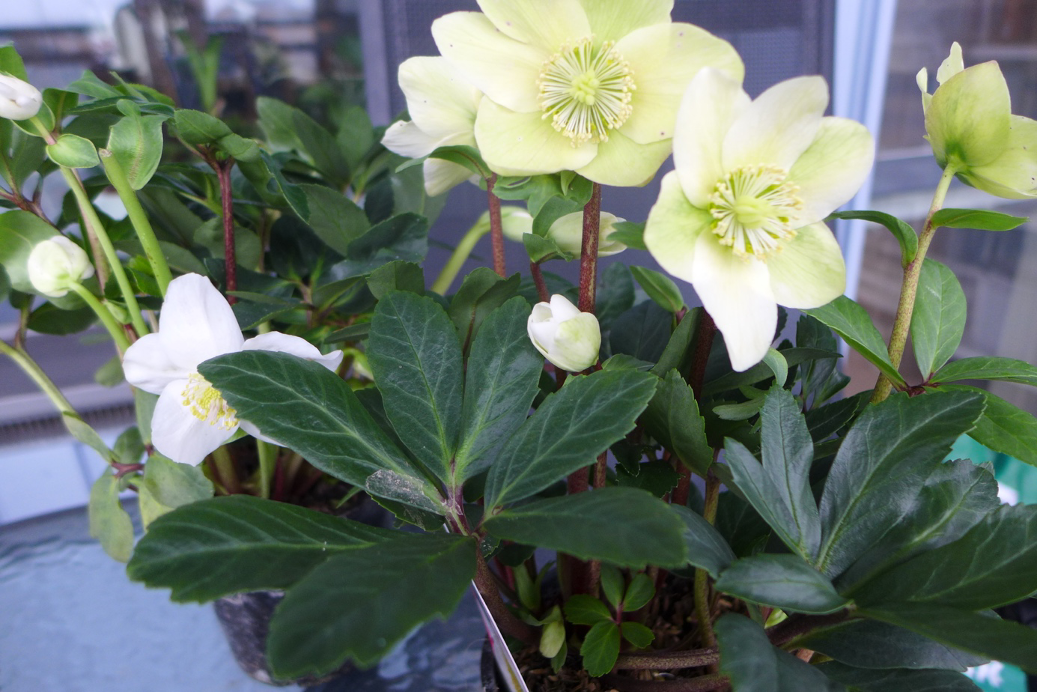
Mistletoe
Mistletoe (Viscum album) is the general name for a semi-parasitic arboreal plant in Central Europe. It grows on the branches of other woody plants, mainly deciduous but also conifers in the alpine area. If you drive down towards northern Germany, you often see poplars completely covered by Mistletoes.
The Mistletoe is placed in the family Santalaceae, a family characterised by semi parasitic genera and species. The Swedish name is Short mistletoe or European mistletoe.
The Mistletoe is protected in Sweden, which means that you may neither collect it nor damage its host tree. In Sweden, the Misteltoe grows naturally in Mälardalen, particularly in Västerås, the Swedish capital of Misteltoes, the reason why it has become the landscape flower of the province Västmanland. Furthermore, you can see implanted Mistletoes in our large botanical gardens, that is, the Bergius Botanic Garden in Stockholm and the Lund and Gothenburg Botanical Garden.
In Nordic mythology, the God Balder was killed by an arrow made of Mistletoe, and the Celtic Druids used mistletoe in folk medicine and cultural rites. The Christmas celebration includes the ancient custom of two people standing under a Mistletoe kissing each other, an echo of old fertility rites.
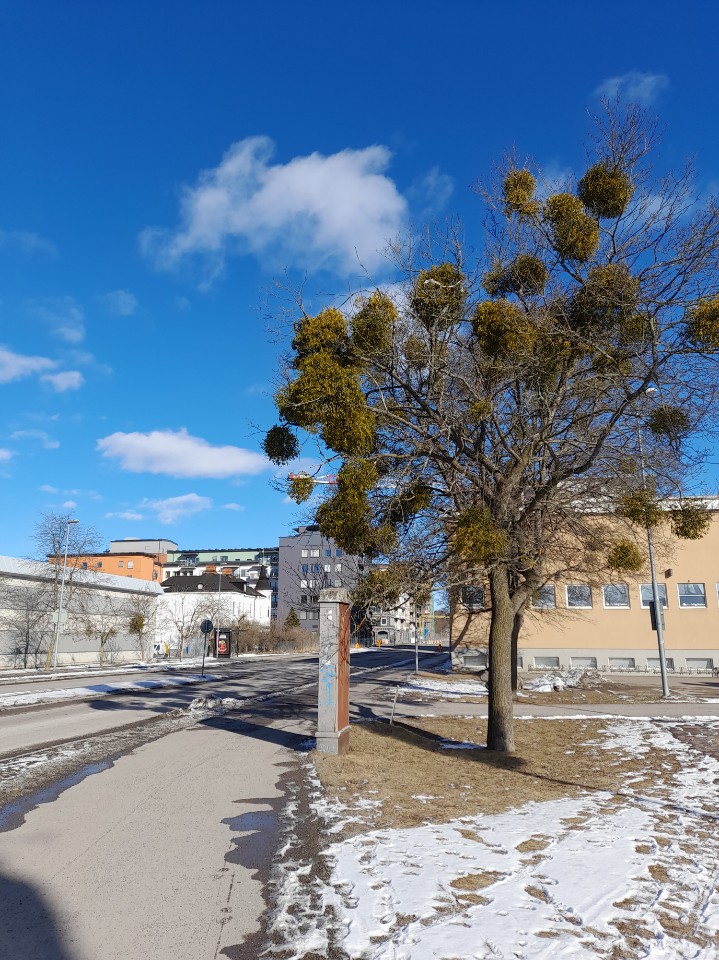
Holly
Holly (Ilex aquifolium) is a species in the holly plant family the Acquifoliaceae, an evergreen shrub or tree that can grow 10–15 meters tall. The plant is sometimes confused with Mahonia, which belongs to a quite different family, the Berberidaceae.
Most parts of the plant are poisonous, the leaves 5–8 cm long and 2–4 cm wide, especially on young trees and low-lying branches, the leaves have 3 and 5 sharp spines on each side. The Holly is dioecious, i.e., male and female flowers occur on different individuals. The flowers are white, the bright reddish fruit is a small drupe, 6–10 mm in diameter. The fruits ripen in late autumn, but because they are bitter, birds do not eat them until the frost has softened the berries.
Holly was a sacred plant to the old Druids. In the areas where the tree grows wild, it is also a very popular Christmas tree for decorations. The Holly is very sensitive towards frost and lower temperature, why the species mainly occurs within winter mild western Atlantic regions. In Scandinavia, Holly therefore only occurs in the westernmost regions in Denmark, Norway and rarely in Bohuslän, thus no inland localities in the boreal forest.
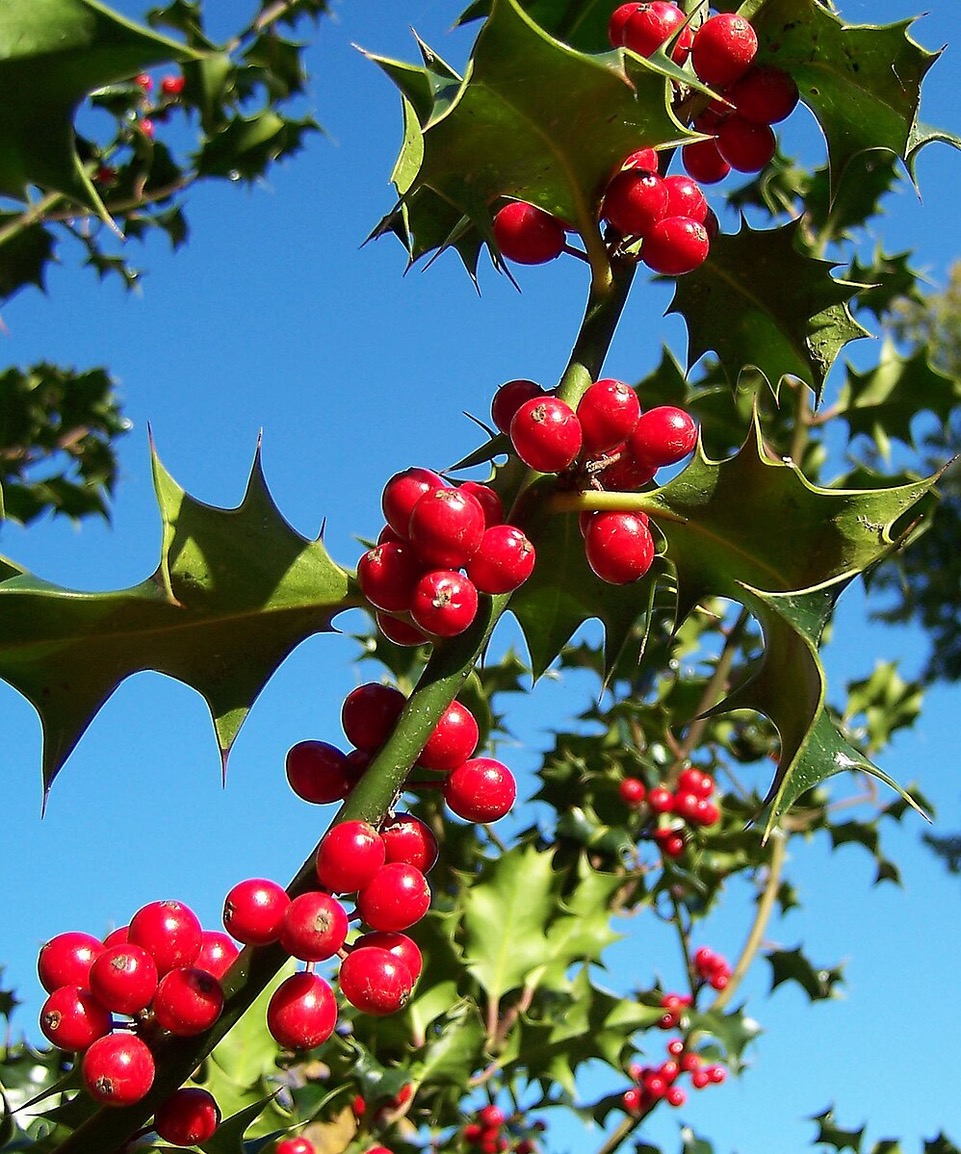
Christmas cactus
Christmas cactus (Schlumbergera buckleyi) is a hybrid between November cactus (Schlumbergera truncata and Schlumbergera russeliana), which belongs to the cactus family, Cactaceae, and originates from southeastern Brazil. Created in mid-19th century in England, the hybrid has become a popular houseplant for its colourful flowers.
The Swedish name comes from the fact that the Christmas cactus usually blooms around Christmas time and it has nowadays become a popular flower in Swedish homes.
There are several cultivated varieties of Christmas cactus, with different flower colours. The Christmas cactus reminds of the November cactus, but can be distinguished by the leaves which lack the sharp teeth and the flowers, which are almost symmetrical. The branches are usually more distinctly pendulous than in a pure November cactus.

Amaryllis
Amaryllis sp. belongs to perennial herbs with bulbs in the Amaryllidaceae family formed through crossing between species of South American origin. Plant breeders have then produced countless named varieties and new ones are presented annually.
The Amaryllis varies with usually green ribbon-like leaves that can grow 40–50 centimeters long. The flower stalk becomes 45–50 centimeters long, hollow, with two to seven large, spectacular lily-shaped flowers. The stamens are attached to the flower pipe.
The flower color varies from white to pink to red and mixtures between these colours. A few species have yellow or white flowers. In Sweden, Amaryllis is now grown as a very popular pot plant and part of the Christmas decorations. The fully developed brightly coloured flowers usually last for several weeks.
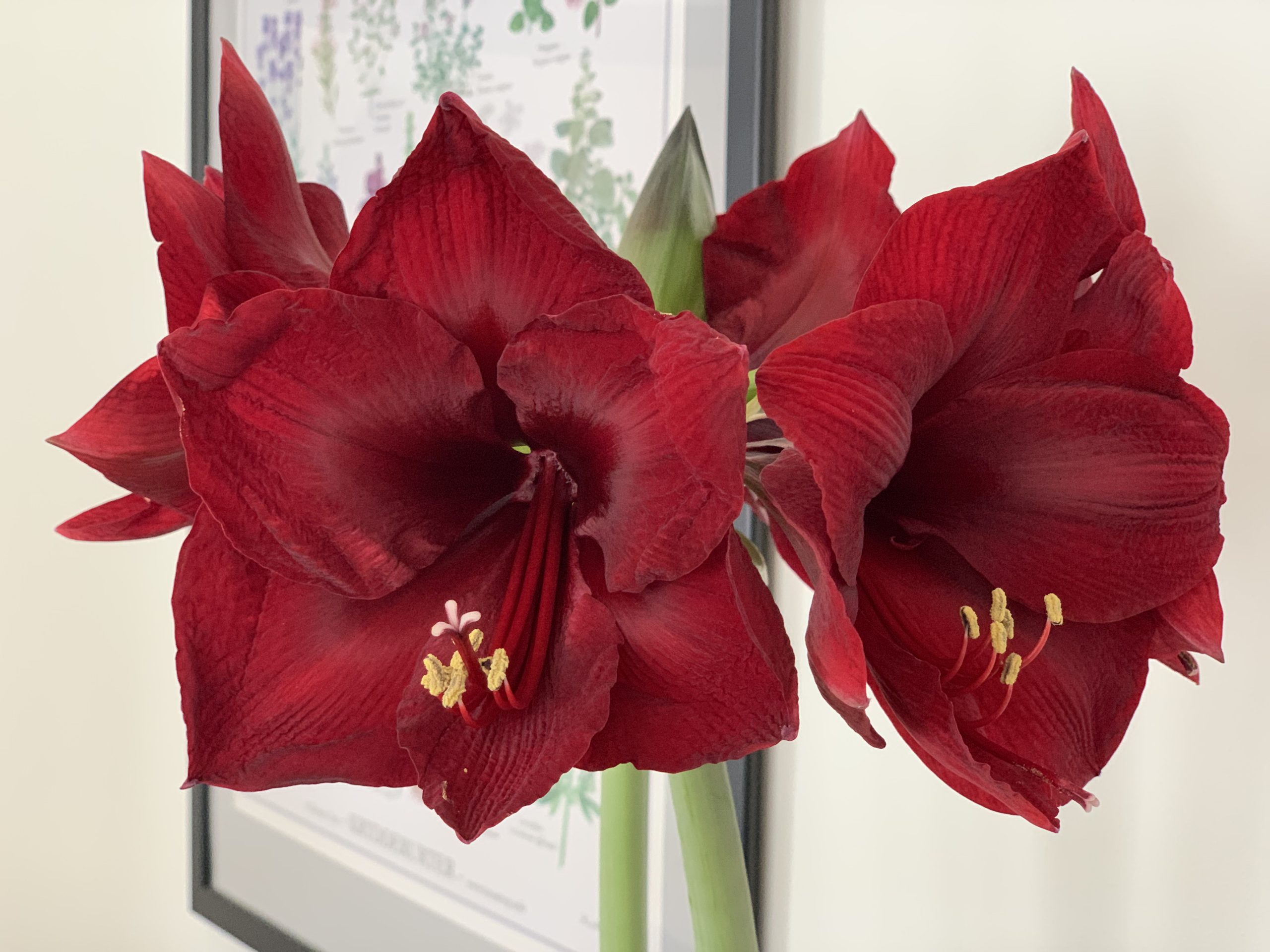
Hyacinth
Hyacinth (Hyacinthus orientalis) is a perennial herb in the plant family Asparagaceae, which occurs wild in southeastern Turkey and western Syria from seashores to 2000 meters altitude. The Hyacinth was probably introduced to Sweden during the 17th century, and became known for its fragrant, attractive colorful flowers, which can vary from blue, white, light yellow, pink, red or purple.
It blooms in the early springtime and grows best in sunny places with well-drained soil, growing to about 20 cm high. The Hyacinth has become a very popular plant during Christmas times for decorations frequently in groups with other plants, and it blooms for about 12–15 days.
The stem grows gradually, and the large flowers may then need a support. The Hyacinth though contains toxic alkaloids and can trigger symptoms among hypersensitive people, and has been listed as one of the scent allergy plants. The Hyacinth has supposedly been named after the Spartan hero in Greek mythology, Hyakinthos.

God Jul – Merry Christmas – Frohe Weihnachten
Joyeux noël – Feliz navidad
Ingvar Kärnefelt and Arne Thell
Biological museum

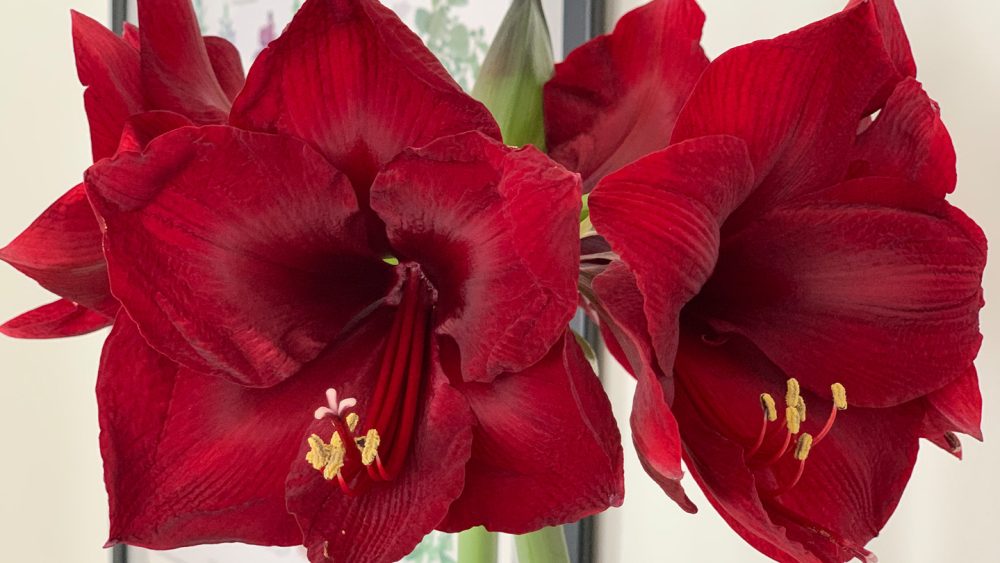
Honor Prentice
Tack detsamma!